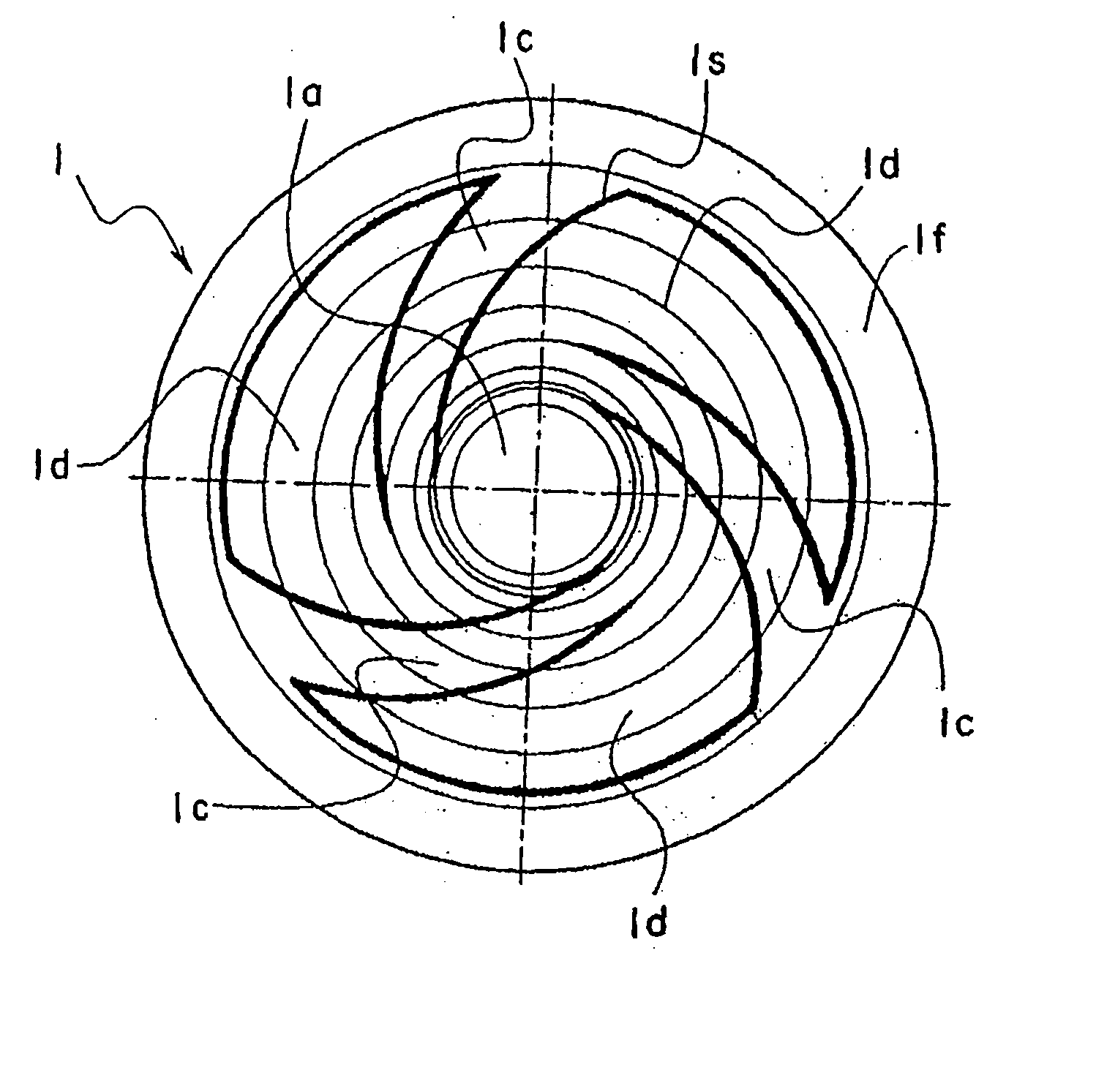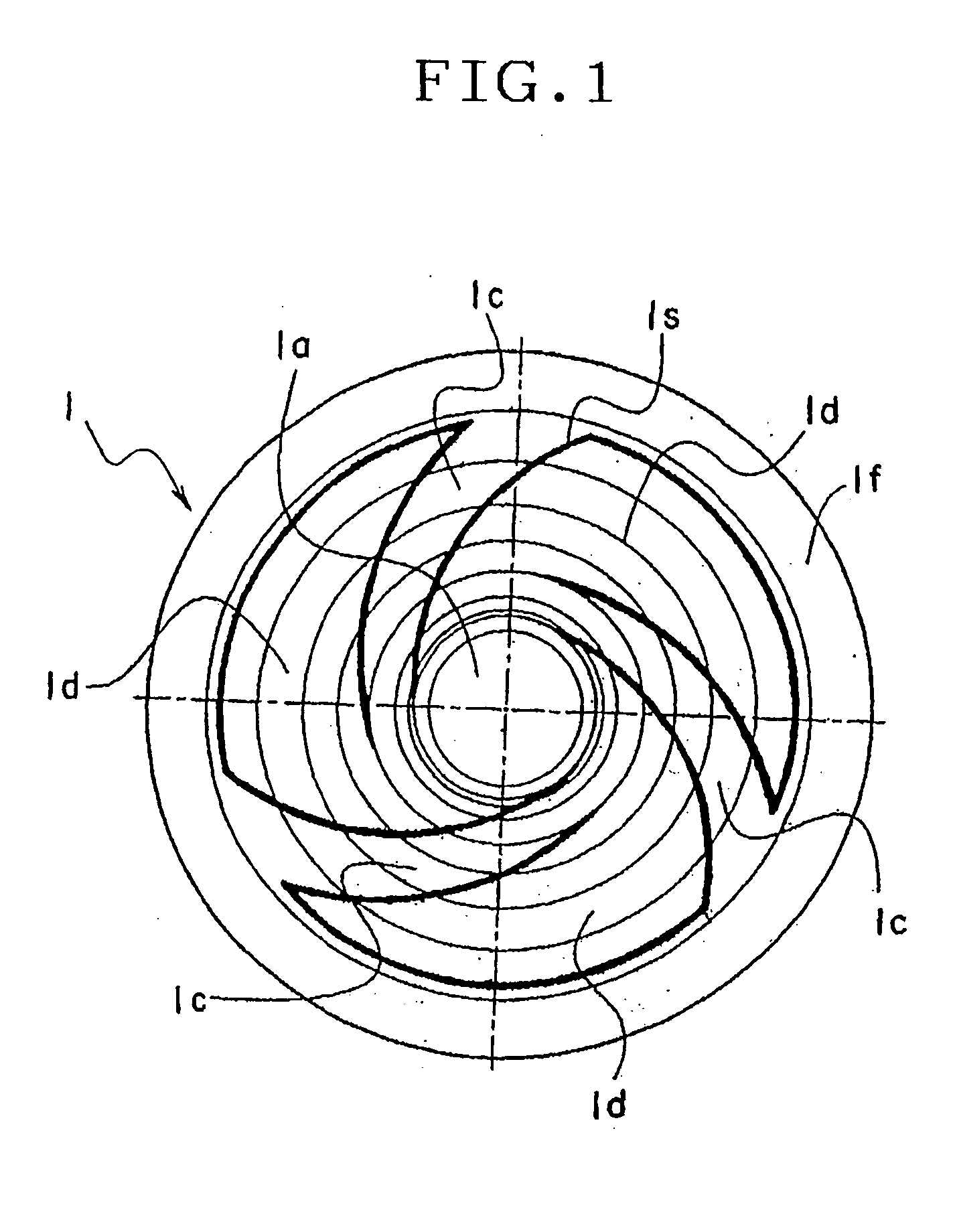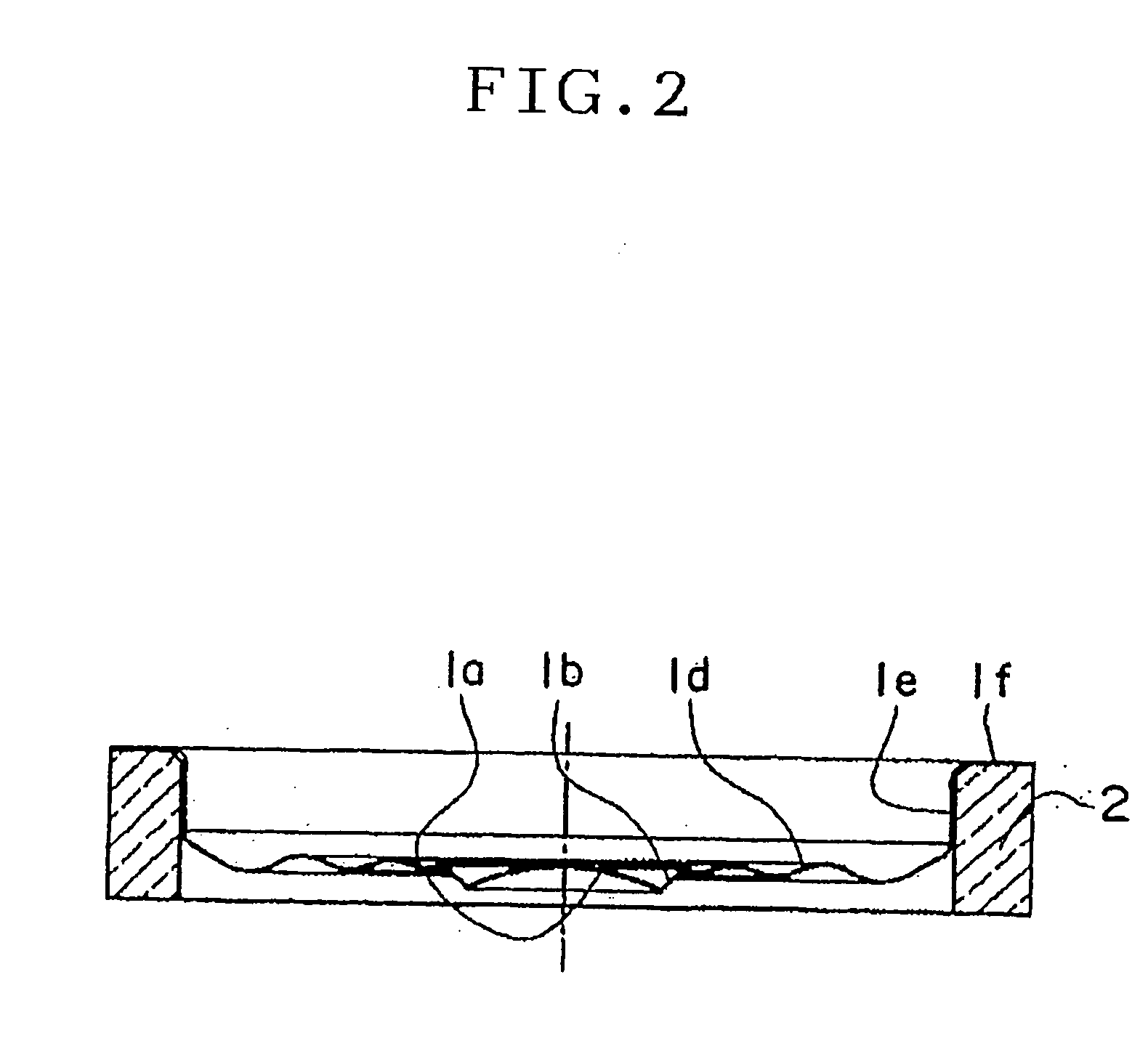Diaphragm structure of light sound converter
- Summary
- Abstract
- Description
- Claims
- Application Information
AI Technical Summary
Problems solved by technology
Method used
Image
Examples
Embodiment Construction
[0043] Embodiments of the invention will be described in detail. FIGS. 1 to 4 show examples of the structure of a diaphragm of a light sound converter according to the embodiments of the invention. In the embodiments, each diaphragm was formed by thermally molding a resin film having a thickness of about 9 .mu.m to about 16 .mu.m.
[0044] FIGS. 1 and 2 show the first embodiment of the invention. The fundamental shape of a diaphragm before slits 1s indicated by bold solid lines in FIG. 1 are formed is similar to that of the conventional diaphragm shown in FIGS. 7 to 9 before partial removal of the diaphragm by trimming molds. Referring to FIGS. 1 and 2, a dome shape reflective part 1a is formed in the central area of a diaphragm 1. The reflective part la has a diameter of 1.3 mm and a radius of curvature of 1.5 mm. A rising part 1b rising obliquely at 45.degree. is formed continuously with an outer peripheral area of the reflective part 1a. A suspension part 1c, 1d is formed integrally...
PUM
| Property | Measurement | Unit |
|---|---|---|
| Time | aaaaa | aaaaa |
| Width | aaaaa | aaaaa |
| Width | aaaaa | aaaaa |
Abstract
Description
Claims
Application Information
 Login to View More
Login to View More - R&D
- Intellectual Property
- Life Sciences
- Materials
- Tech Scout
- Unparalleled Data Quality
- Higher Quality Content
- 60% Fewer Hallucinations
Browse by: Latest US Patents, China's latest patents, Technical Efficacy Thesaurus, Application Domain, Technology Topic, Popular Technical Reports.
© 2025 PatSnap. All rights reserved.Legal|Privacy policy|Modern Slavery Act Transparency Statement|Sitemap|About US| Contact US: help@patsnap.com



